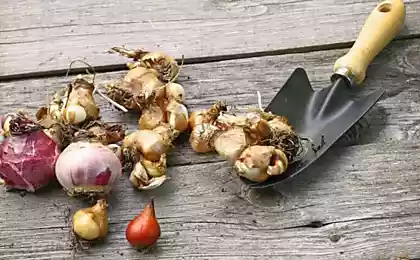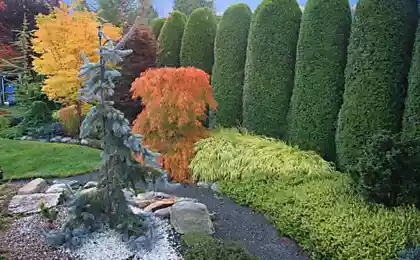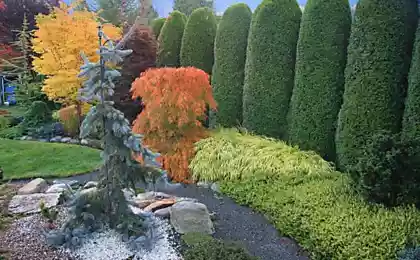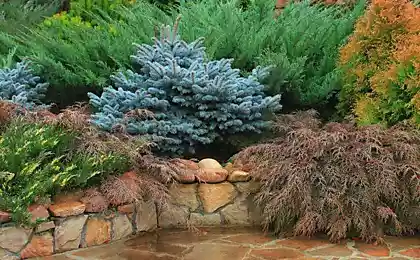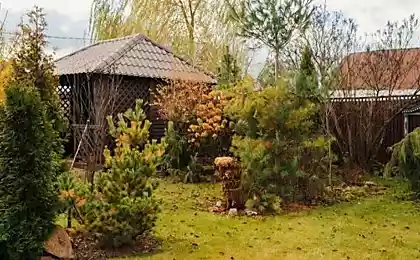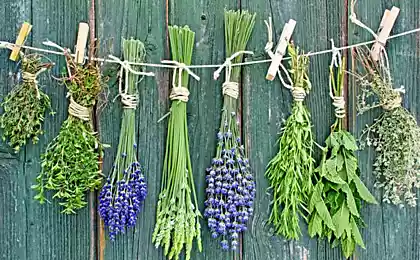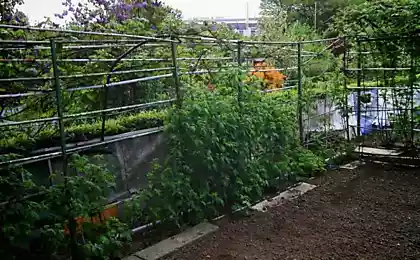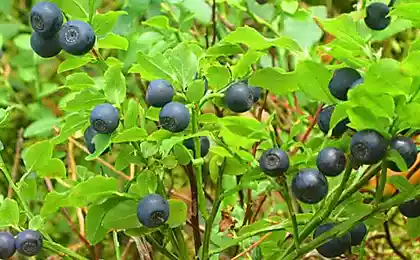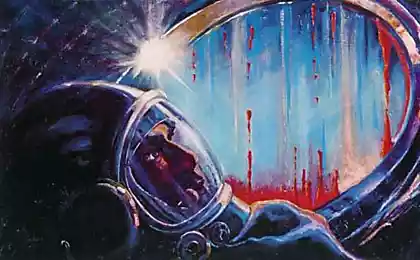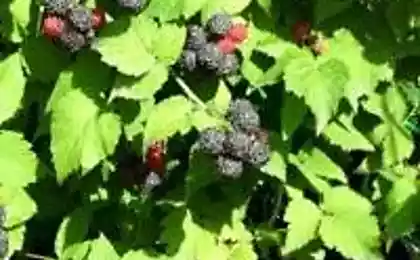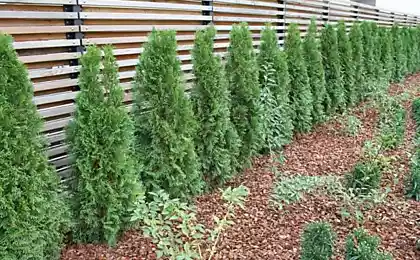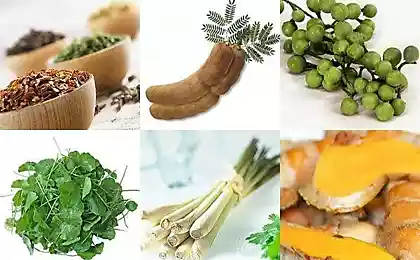534
4 mistakes when planting conifers
Seven million six hundred ninety seven thousand four hundred fifty two
Continues the optimum time of planting of conifers that are planted and transplanted, not only in autumn, when the heat subsides, but in the spring before the onset of hot weather.
Last spring, on the website we have looked at 15 of the most common mistakes gardeners make when planting, including conifers, but the nuances that exist when planting conifers, deciduous and evergreen, some deciduous woody, floral perennials, seedling flower annuals and vegetables will analyze in detail this season. So, coniferous – any individual mistakes gardeners make when planting that important when planting each of the major coniferous cultures they ignore?
Error 1: violation of the earthen coma during landing.
If planting conifers to keep the soil ball, the roots will dry up and wither away. All coniferous plants are transplanted, always with a clod! For better preservation of the coma is required before digging the tree, shrub, be sure to pour it. The preservation of earthen coma is achieved fast packing coma sacking, a bast Mat or other materials and tying strong twine, wire, metal mesh. When planting conifers from the container, it is also well watered the day before and carefully remove from tank.
Only after the installation of a lump in the planting hole it free from the packaging. Haste in release of the clod of earth may cause spillage. Some gardeners prefer to leave the burlap in the soil (anyway decompose), thus removing the rigid fixation with wire, mesh or synthetic materials. Error 2: a small planting pit or a mismatch of the landing pit earthen coma conifers.
Seat for conifers should be wider coma diameter and deeper than the height of coma. Visually it should look like this: between lumpy and the walls of the pit must enter an adult man's palm, and root collar* must be at soil level. After the establishment of earthen clod coniferous plants in the planting hole air gaps covered with soil to backfill specific for conifers (see further in the text), and if not, the soil that was removed when preparing the planting hole, but it is clear that in the latter case, the plant will grow worse.
Mistake 3: filling the root collar conifers.
In the event of a forced filling of the root collar of the tree the earth it is necessary to release the plant from the ground to the level of the root collar, and if this is not possible – to arrange air drainage. To do this, the area of the root system, arrange the network of trenches, which are filled with stone. Trenches are communicated with the surface of the soil pipes through which outside air can freely penetrate the drainage to the root system. On top of the trench covered with earth. The distance between the trenches should not exceed one meter, width of the trenches is not less than 70 cm.
Mistake 4: ignoring the individual requirements of conifers when planting.
of certain conifers has its own nuances depending on the species. In order for your pet conifers grow well in a new place, it is important not to ignore its requirements and to create optimum conditions for development.
Tdemands the oil:
The requirements of the cypress. choice of planting location: partial shade, variegated forms – in the sun;
Requirements fir:
the choice of the landing site: shady places; better seedlings take root at the age of 5-10 years; soil for backfill: clay, leaf mold or humus, peat and sand (2:3:1:1);
Requirements of Tisa choice of planting location: partial shade, shady places;
Under conifers, you can mulch with pine needles, better large, pine – it provides air flow to the roots. In addition, polarisa needles always contains mycelium. When digging, it is even visible to the eye is the white thread. Among the fungi are useful and even necessary to plants. Because many coniferous – mycorrhizal plants, they live in symbiosis with mushrooms.
Explanations of the terms found in the text:
*Root collar — the junction of the trunk to the root.
**Mulch – a layer of material placed on the soil surface to "seal" the moisture in the soil, "smother" the weeds and give a decorative look. Garden centers sell various types of mulch, gravel, bark and other materials.
Source: www.7dach.ru
Continues the optimum time of planting of conifers that are planted and transplanted, not only in autumn, when the heat subsides, but in the spring before the onset of hot weather.
Last spring, on the website we have looked at 15 of the most common mistakes gardeners make when planting, including conifers, but the nuances that exist when planting conifers, deciduous and evergreen, some deciduous woody, floral perennials, seedling flower annuals and vegetables will analyze in detail this season. So, coniferous – any individual mistakes gardeners make when planting that important when planting each of the major coniferous cultures they ignore?
Error 1: violation of the earthen coma during landing.
If planting conifers to keep the soil ball, the roots will dry up and wither away. All coniferous plants are transplanted, always with a clod! For better preservation of the coma is required before digging the tree, shrub, be sure to pour it. The preservation of earthen coma is achieved fast packing coma sacking, a bast Mat or other materials and tying strong twine, wire, metal mesh. When planting conifers from the container, it is also well watered the day before and carefully remove from tank.
Only after the installation of a lump in the planting hole it free from the packaging. Haste in release of the clod of earth may cause spillage. Some gardeners prefer to leave the burlap in the soil (anyway decompose), thus removing the rigid fixation with wire, mesh or synthetic materials. Error 2: a small planting pit or a mismatch of the landing pit earthen coma conifers.
Seat for conifers should be wider coma diameter and deeper than the height of coma. Visually it should look like this: between lumpy and the walls of the pit must enter an adult man's palm, and root collar* must be at soil level. After the establishment of earthen clod coniferous plants in the planting hole air gaps covered with soil to backfill specific for conifers (see further in the text), and if not, the soil that was removed when preparing the planting hole, but it is clear that in the latter case, the plant will grow worse.
Mistake 3: filling the root collar conifers.
In the event of a forced filling of the root collar of the tree the earth it is necessary to release the plant from the ground to the level of the root collar, and if this is not possible – to arrange air drainage. To do this, the area of the root system, arrange the network of trenches, which are filled with stone. Trenches are communicated with the surface of the soil pipes through which outside air can freely penetrate the drainage to the root system. On top of the trench covered with earth. The distance between the trenches should not exceed one meter, width of the trenches is not less than 70 cm.
Mistake 4: ignoring the individual requirements of conifers when planting.
of certain conifers has its own nuances depending on the species. In order for your pet conifers grow well in a new place, it is important not to ignore its requirements and to create optimum conditions for development.
Tdemands the oil:
- the choice of the landing: shaded areas; to exclude the landing site with similar groundwater;
- soil for backfill: sod, ground sheet, peat and sand (2:2:1:1);
- drainage is required: a layer of broken bricks and sand 15-20 cm;
- planting depth 50-70 cm;
- to eliminate trampling and soil compaction, especially in tree trunks.
The requirements of the cypress. choice of planting location: partial shade, variegated forms – in the sun;
- soil for backfill: humus, ground sheet, peat and sand (3:2:1:2);
- drainage is required: a layer of broken bricks and sand up to 20 cm;
- planting depth 70 cm, rarely up to 1 m.
- Requirements larch:
- the choice of the landing site are: open Sunny places; for larch Japanese – partial shade;
- soil for filling: ground sheet, peat and sand (3:2:1);
- the drainage only in heavy soil: a layer of broken bricks up to 20 cm;
- planting depth: 70-80 cm;
- plants are planted to a permanent place in the age of 4-5 years;
- planting time – before Bud;
- saving young thin roots with mycorrhiza.
- The requirements of the junipers:
- choice of planting location: full sun;
- soil for backfill: peat, turf ground, sand (2:1:1); the ratio may vary depending on the type: so Siberian m. prefers sandy soils, M. Cossack grows well on calcareous, M. virgin – on clay;
- drainage is required: a layer of broken bricks and sand 15-20 cm;
- planting depth 70 cm, with bedding of the soil in the pit.
Requirements fir:
the choice of the landing site: shady places; better seedlings take root at the age of 5-10 years; soil for backfill: clay, leaf mold or humus, peat and sand (2:3:1:1);
- drainage is required on heavy soil: a layer of broken bricks or gravel 20 cm;
- planting depth of 50-60 cm; root collar should remain on the ground level.
- The requirements of the pines:
- selection of landing area: open space; well-suited to the seedlings up to the age of 5 years;
- soil for backfill: turf ground, sand or clay (2:1);
- drainage is required on heavy soil: a layer of broken bricks, gravel or sand 20 cm;
- planting depth of 0.8-1 m
Requirements of Tisa choice of planting location: partial shade, shady places;
- soil for backfill: turf ground, peat and sand (3:2:2);
- drainage is required: a layer of broken bricks and sand 20 cm;
- planting depth: 60-70 cm.
- Requirements TUI the choice of the landing site: Sunny and half-shaded places;
- soil for backfill: turf or ground sheet, peat and sand (2:1:1);
- drainage is required: a layer of broken bricks and sand 20 cm;
- planting depth: 60-80 cm
Under conifers, you can mulch with pine needles, better large, pine – it provides air flow to the roots. In addition, polarisa needles always contains mycelium. When digging, it is even visible to the eye is the white thread. Among the fungi are useful and even necessary to plants. Because many coniferous – mycorrhizal plants, they live in symbiosis with mushrooms.
Explanations of the terms found in the text:
*Root collar — the junction of the trunk to the root.
**Mulch – a layer of material placed on the soil surface to "seal" the moisture in the soil, "smother" the weeds and give a decorative look. Garden centers sell various types of mulch, gravel, bark and other materials.
Source: www.7dach.ru
A real "Swiss army knife" for opening Android
8 pretty innocuous things that are actually bad for you




